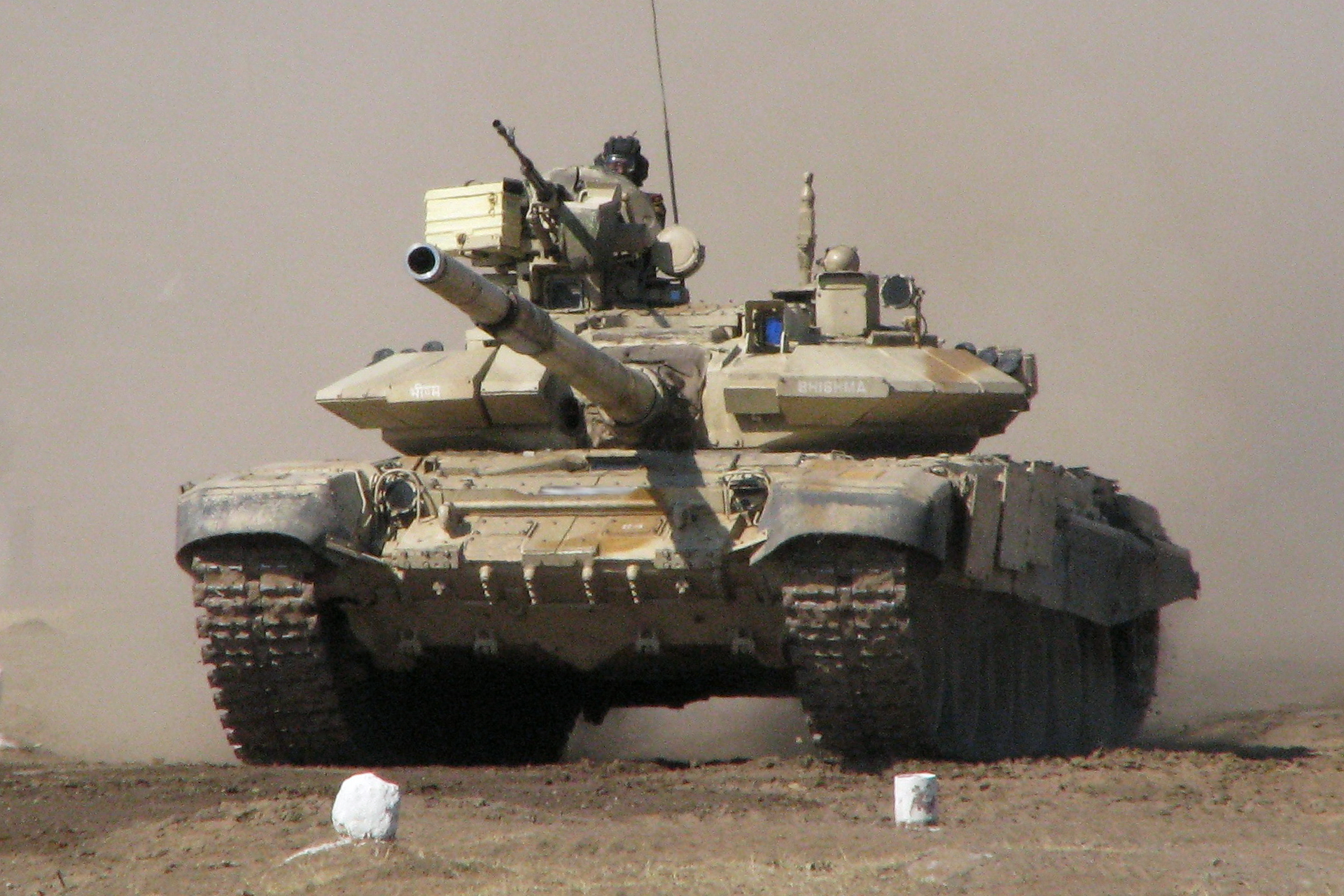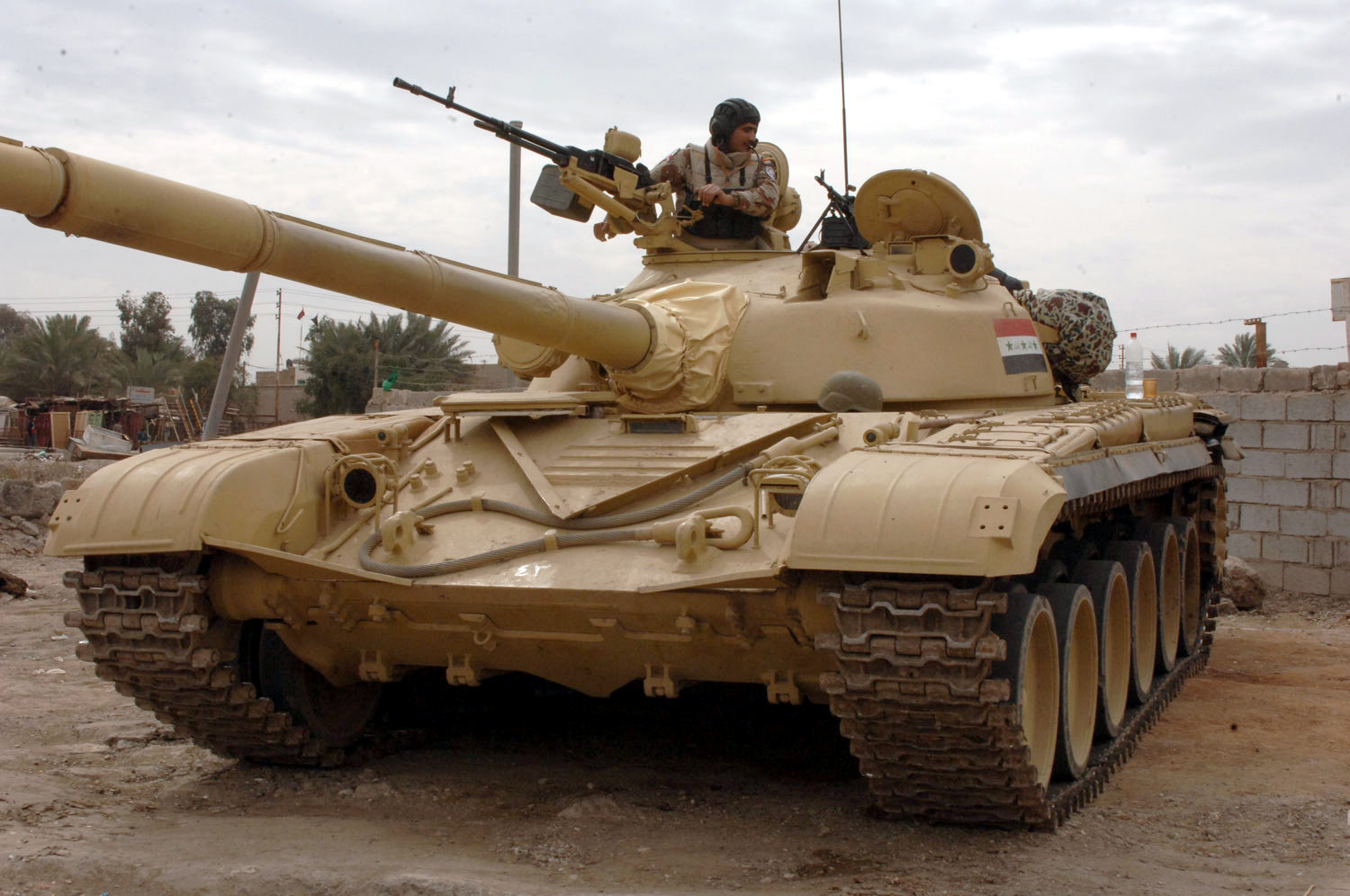Military Tanks
A tank is a large type of armoured fighting vehicle with tracks, designed for front-line combat. Modern tanks are strong mobile land weapons platforms, mounting a large-calibre cannon in a rotating gun turret. They combine this with heavy vehicle armour providing protection for the crew of the weapon and operational mobility, which allows them to position on the battlefield in advantageous locations. These features enable the tank to have enormous capability to perform well in a tactical situation: the combination of strong weapons fire from their tank gun and their ability to resist enemy fire means the tank can take hold of and control an area of the battle and prevent other enemy vehicles from advancing, for example. In both offensive and defensive roles, they are powerful units able it to perform all primary tasks[which?] required of armoured troops on the battlefield.[1] The modern tank was the result of a century of development from primitive armoured vehicles, due to massive improvements in technology such as the internal combustion engine, which allowed the rapid movement of heavy equipment required to construct armoured vehicles. As a result of the these advances, tanks underwent tremendous shifts in capability during the World Wars of the 20th century.
Tanks in World War I were developed separately and simultaneously by Great Britain [2] and France as a means to break the deadlock of trench warfare on the Western Front. Their first use in combat was by the British Army on September 15, 1916 at Flers-Courcelette, during the Battle of the Somme. The name "tank" was adopted by the British during the early stages of their development, as a security measure to conceal their purpose (see etymology). While the French and British built thousands of tanks between them, Germany developed and brought into service only a single design, the A7V, producing 20 vehicles due to lack of capacities or resources.
Tanks of the interwar period evolved into the designs of World War II. Important concepts of armoured warfare were developed; the Soviet Union launched the first mass tank/air attack at Khalkhin Gol (Nomonhan) in August 1939,[3] which later resulted in the T-34, a predecessor of the main battle tank; this was quickly followed up by Germany on a larger scale when they introduced blitzkrieg ('lightning war') less than two weeks later; a technique which made use of massed concentrations of tanks supported by artillery and air power to break through the enemy front and cause a complete collapse in enemy resistance and morale.
The widespread introduction of the HEAT warheads during the second half of WWII led to lightweight anti-tank weapons with considerable power. This caused major changes in tank doctrine and the introduction of effective combined arms tactics. Tanks in the Cold War were designed with these weapons in mind, and led to greatly improved armours during the 1960s, especially composite armour. Improved engines, transmissions and suspensions allowed tanks of this period to grow larger. Aspects of gun technology changed significantly as well, with advances in shell design.
During the 20th century, main battle tanks were considered a key component of modern armies.[4] In the 21st century, with the increasing role of asymmetrical warfare and the end of the Cold War, that also contributed to the increase of cost-effective Russian anti-tank weapons worldwide, the importance of tanks has waned. Modern tanks seldom operate alone, as they are organized into combined arms units which involve the support of infantry, who may accompany the tanks in infantry fighting vehicles. They are also usually supported by reconnaissance or ground-attack aircraft






A tank is a large type of armoured fighting vehicle with tracks, designed for front-line combat. Modern tanks are strong mobile land weapons platforms, mounting a large-calibre cannon in a rotating gun turret. They combine this with heavy vehicle armour providing protection for the crew of the weapon and operational mobility, which allows them to position on the battlefield in advantageous locations. These features enable the tank to have enormous capability to perform well in a tactical situation: the combination of strong weapons fire from their tank gun and their ability to resist enemy fire means the tank can take hold of and control an area of the battle and prevent other enemy vehicles from advancing, for example. In both offensive and defensive roles, they are powerful units able it to perform all primary tasks[which?] required of armoured troops on the battlefield.[1] The modern tank was the result of a century of development from primitive armoured vehicles, due to massive improvements in technology such as the internal combustion engine, which allowed the rapid movement of heavy equipment required to construct armoured vehicles. As a result of the these advances, tanks underwent tremendous shifts in capability during the World Wars of the 20th century.
Tanks in World War I were developed separately and simultaneously by Great Britain [2] and France as a means to break the deadlock of trench warfare on the Western Front. Their first use in combat was by the British Army on September 15, 1916 at Flers-Courcelette, during the Battle of the Somme. The name "tank" was adopted by the British during the early stages of their development, as a security measure to conceal their purpose (see etymology). While the French and British built thousands of tanks between them, Germany developed and brought into service only a single design, the A7V, producing 20 vehicles due to lack of capacities or resources.
Tanks of the interwar period evolved into the designs of World War II. Important concepts of armoured warfare were developed; the Soviet Union launched the first mass tank/air attack at Khalkhin Gol (Nomonhan) in August 1939,[3] which later resulted in the T-34, a predecessor of the main battle tank; this was quickly followed up by Germany on a larger scale when they introduced blitzkrieg ('lightning war') less than two weeks later; a technique which made use of massed concentrations of tanks supported by artillery and air power to break through the enemy front and cause a complete collapse in enemy resistance and morale.
The widespread introduction of the HEAT warheads during the second half of WWII led to lightweight anti-tank weapons with considerable power. This caused major changes in tank doctrine and the introduction of effective combined arms tactics. Tanks in the Cold War were designed with these weapons in mind, and led to greatly improved armours during the 1960s, especially composite armour. Improved engines, transmissions and suspensions allowed tanks of this period to grow larger. Aspects of gun technology changed significantly as well, with advances in shell design.
During the 20th century, main battle tanks were considered a key component of modern armies.[4] In the 21st century, with the increasing role of asymmetrical warfare and the end of the Cold War, that also contributed to the increase of cost-effective Russian anti-tank weapons worldwide, the importance of tanks has waned. Modern tanks seldom operate alone, as they are organized into combined arms units which involve the support of infantry, who may accompany the tanks in infantry fighting vehicles. They are also usually supported by reconnaissance or ground-attack aircraft





No comments:
Post a Comment